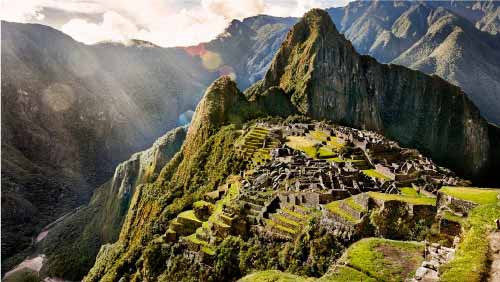The Aztec civilization was one of the most important and advanced cultures of pre-Hispanic Mesoamerica. The Aztecs settled in the Valley of Mexico in the fourteenth century and founded their capital, Tenochtitlan, in 1325.
The Aztecs were a warrior people and their empire expanded by conquering other neighboring cultures. They established a tax system that allowed them to obtain resources from subject peoples, and they also practiced slavery. However, they also had a great cultural and scientific development.
Religion was a very important part of Aztec life, and the gods occupied a central place in their worldview. The Aztecs practiced human and animal sacrifices as offerings to the gods. They also developed a complex calendar and numbering system.
As for architecture, the Aztecs built impressive temples and palaces in their capital, Tenochtitlan. The city was located on an island in the middle of a lake and was connected to the mainland by drawbridges. They also built an extensive network of canals for transporting goods and people.
The Aztec empire came to an end with the arrival of the Spanish conquistadors in the sixteenth century, led by Hernán Cortés. Despite resistance from the Aztecs, the Spanish managed to conquer Tenochtitlan in 1521, marking the end of Aztec civilization.
Your tax system
The Aztec tax system was a fundamental part of their political and economic organization. It consisted of the collection of tributes by the peoples subjected to the Aztecs, which consisted of products such as food, clothing, precious metals, feathers and wood, among others. The tributes were collected by officials appointed by the Aztecs and then transported to the capital, Tenochtitlan.
The tributes were a way to guarantee the supply of goods necessary for the subsistence of the Aztec population and to finance the construction of monuments and temples in the capital. The tax system was also a way to maintain control over the subject peoples and to consolidate the power of the empire.
However, the Aztecs did not impose taxes on all the peoples they conquered. Some villages were exempt from taxes and instead were required to provide services such as the construction of buildings, roads and bridges. In addition, some peoples maintained their own political organization and were not completely subjugated by the Aztecs.
The tax system was also linked to religion. Tributes were considered offerings to the gods and were used to finance temples and religious ceremonies. In this sense, the tributary system was considered a way to maintain harmony with the gods and ensure the protection of the empire.
They practiced slavery
Yes, the Aztecs practiced slavery, although their form of slavery was different from that practiced elsewhere in the world. Rather than being a form of permanent ownership of a person, Aztec slavery was a temporary form of servitude that could last for a few years or even decades. People could fall into slavery for various reasons, such as war, debt, or theft.
Aztec slaves were not considered citizens and had no legal rights. However, not all slaves were treated equally. Some were employed in domestic or agricultural tasks, while others worked in workshops or as servants of the nobles. Some slaves could also buy their freedom or be freed by their masters.
Importantly, slavery was not an institution exclusive to the Aztecs. Many other Mesoamerican cultures also practiced slavery in different forms and for different reasons. Moreover, slavery was not viewed in the same way by all members of Aztec society. Some groups, such as nobles and warriors, might have a more favorable view of slavery as a way to obtain workers or prisoners of war. Instead, other groups could take a more critical view of slavery and work to abolish it.
Cultural development
The Aztecs had a great cultural and artistic development. One of their most outstanding achievements was the creation of a hieroglyphic and pictographic writing system that allowed them to record their history and knowledge. Although much of the Aztec writings were destroyed by the Spanish conquistadors, some codices have survived and have become important sources of information about Aztec culture.
Poetry also played an important role in Aztec culture. Poems were used to celebrate important events and to convey knowledge and values. Aztec poetry was characterized by the use of metaphors, images, and symbolism.
Music and dance were also very important in Aztec culture. The Aztecs used a wide variety of musical instruments, such as drums, flutes, and conch shells, and dances were used to celebrate life, death, and the gods. Some of the most famous dances of the Aztecs included the snake dance and the eagle dance.
As for architecture, the Aztecs built impressive temples and palaces in their capital, Tenochtitlan. They used a construction technique that involved using stones and mud to create solid, durable structures. In addition, the Aztecs developed advanced farming and irrigation techniques, which allowed them to produce large quantities of food in the Valley of Mexico.
The Aztecs were also adept at using precious metals and stones to create art objects and jewelry. They used casting and forging techniques to create objects of gold, silver, and copper, and carved precious stones such as jade and turquoise into intricate shapes.
Aztec culture was rich and diverse, with significant achievements in areas such as writing, poetry, music, dance, architecture, and arts and crafts.
Scientific development of the Aztec civilization
The Aztecs made important advances in areas such as astronomy, medicine, and agriculture. The following are some of the most outstanding achievements in these areas:
Astronomy: The Aztecs developed a calendar that was more accurate than many of the calendars used in Europe at the time. Their calendar was based on observing the movements of the sun, moon and stars, and allowed them to accurately predict solar and lunar eclipses. The Aztecs also had a great knowledge of the constellations and believed that they had an influence on human life.
Medicine: The Aztecs had an advanced medicine for their time. They had knowledge of anatomy and physiology, and used a wide variety of medicinal plants to treat diseases. In addition, the Aztecs practiced surgery, including trepanation, a procedure in which the skull was pierced to treat brain injuries.
Agriculture: The Aztecs were adept at agriculture and developed advanced techniques to maximize food production in the Valley of Mexico. For example, they created chinampas, artificial islands made of soil and vegetation, to grow corn, beans and other crops. The Aztecs also used irrigation techniques and terraces to make the most of the available land.
In addition to these achievements, the Aztecs also had a great knowledge of botany and zoology, and were able to identify and classify a wide variety of plants and animals. However, it is important to note that much of the scientific knowledge of the Aztecs was lost after the Spanish conquest, as many of their books and records were destroyed or lost.
Religion of the Aztec civilization
Religion was a fundamental part of Aztec culture and was closely linked to all areas of life, from politics to agriculture. The Aztecs had a polytheistic religion, meaning they worshipped many gods and goddesses.
The most important gods of Aztec religion were Huitzilopochtli, the god of war and the sun, and Quetzalcoatl, the god of wisdom and culture. Other important gods included Tlaloc, the god of rain, and Coatlicue, the goddess of earth and fertility.
The Aztecs believed that the gods controlled every aspect of human life, from agriculture to war. To keep the gods happy, the Aztecs performed human sacrifices and offered food and other valuable objects. Human sacrifices were carried out on special occasions, such as during the construction of a new temple or in times of crisis, such as drought or epidemic.
The Aztecs also had a large number of religious festivals throughout the year, some of which lasted several days. These festivals included dances, music, and offerings to the gods.
The Aztec religion was an integral part of Aztec culture and was reflected in all aspects of life. The Aztecs worshipped many gods and goddesses, and believed that human sacrifices and offerings were necessary to keep the gods happy and ensure the prosperity of their society.
End of the Aztec civilization
The Aztec civilization came to an end with the Spanish conquest led by Hernán Cortés in 1521. The fall of the Aztec Empire was the result of a combination of factors, including the military superiority of the Spanish, European diseases that decimated the indigenous population, and the collaboration of some indigenous groups that allied with the Spanish.
In 1519, Hernán Cortés reached the coast of the Gulf of Mexico with a small Spanish army and headed inland to seek the conquest of Aztec territories. Upon arrival, he encountered an Aztec Empire divided by politics and disease, which allowed Cortés to gain the help of some indigenous groups who were at odds with the Aztec government. With this help, Cortés managed to reach the capital of the Aztec Empire, Tenochtitlan, in 1521.
The fight for the conquest of Tenochtitlan was fierce, but eventually the Spanish and their indigenous allies managed to take the city and capture the last Aztec emperor, Cuauhtémoc. With the fall of Tenochtitlan, the Aztec Empire came to an end and Spain established the Viceroyalty of New Spain in territory formerly belonging to the Aztec Empire.
The Spanish conquest destroyed much of Aztec culture and civilization, including their religion, art, and literature. However, some of the traditions and customs of the Aztecs survived and merged with Spanish culture to form the basis of modern Mexican culture.


